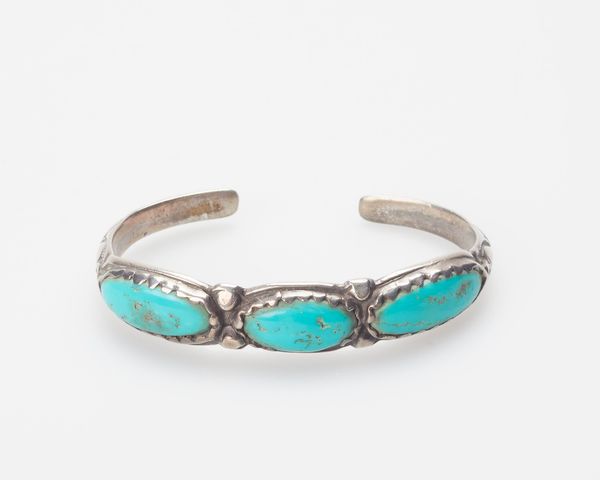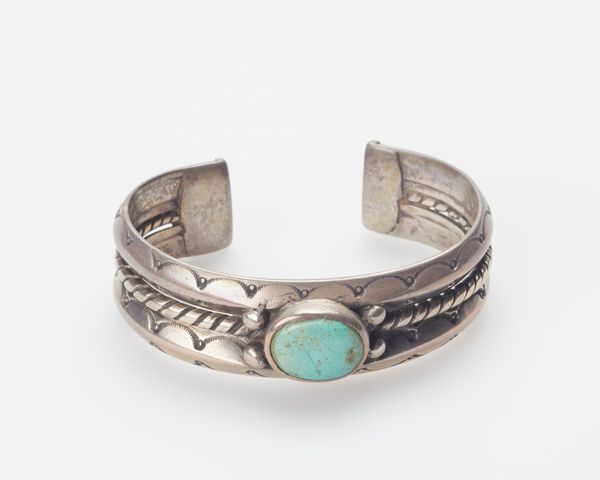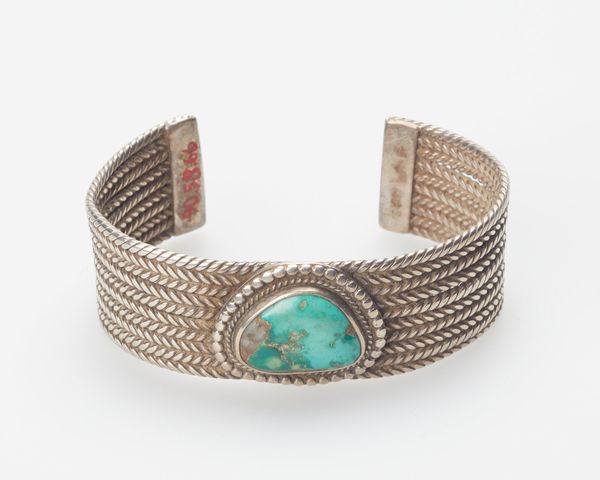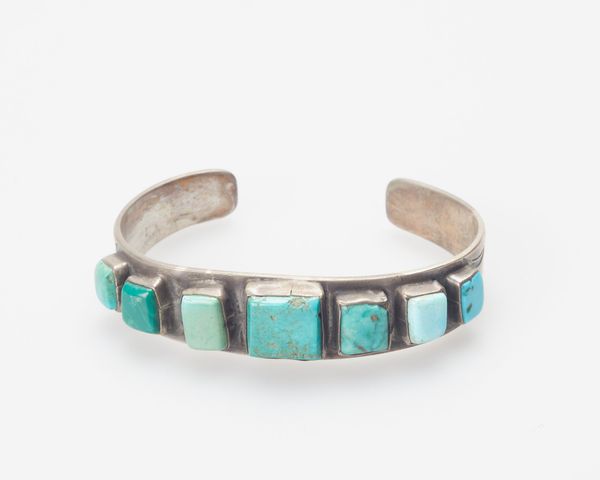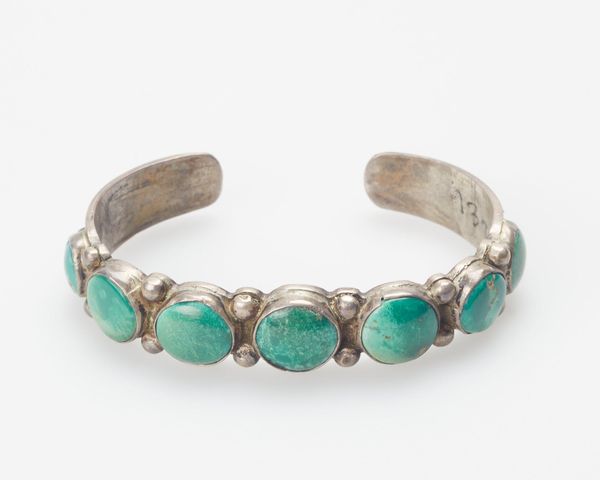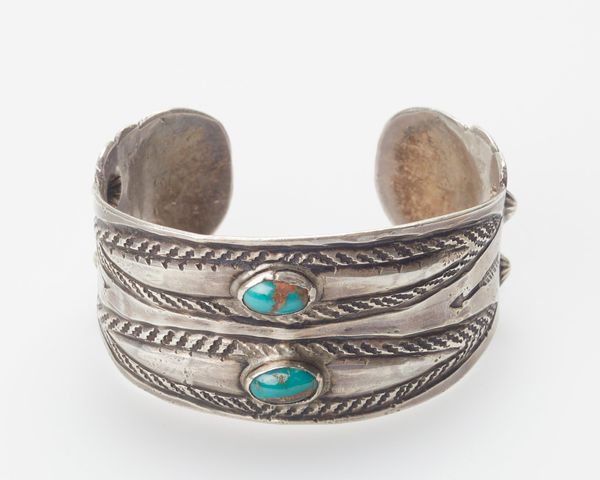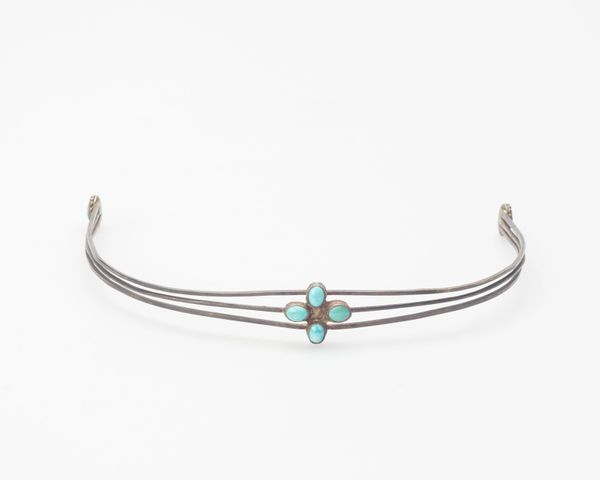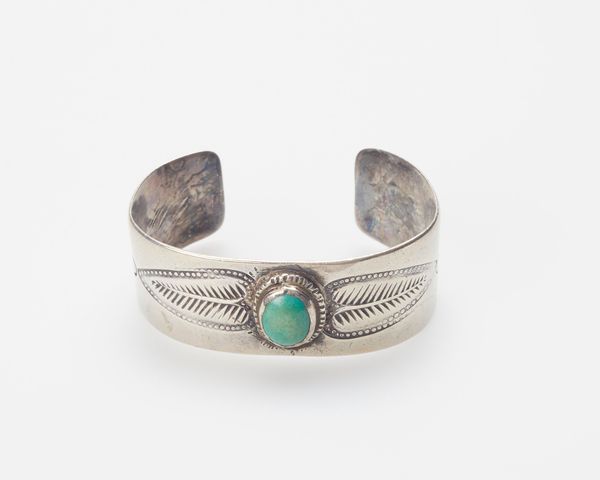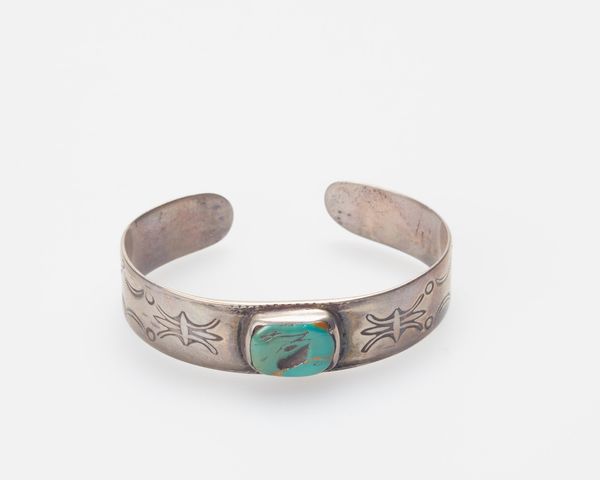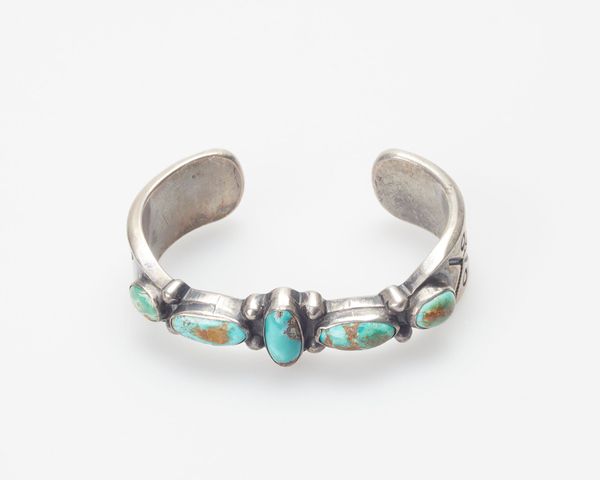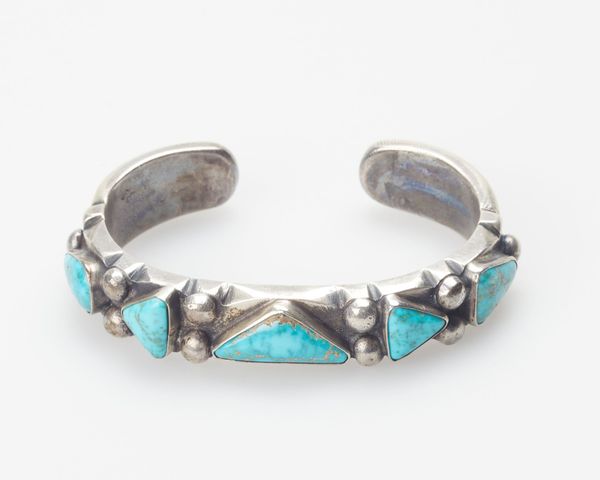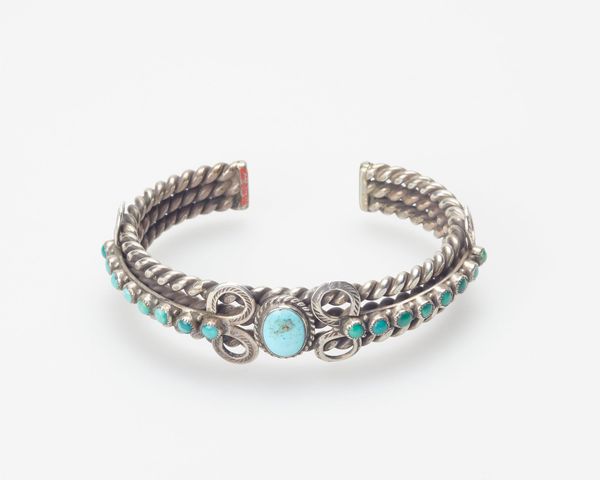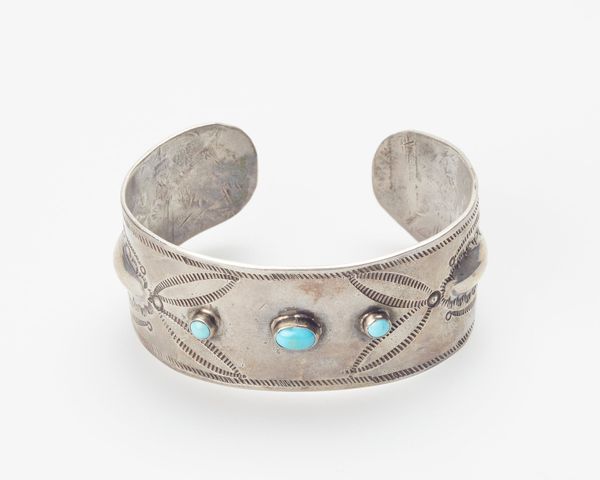
silver, metal
#
silver
#
metal
Copyright: Public Domain
Curator: The simplicity of form is quite striking, isn’t it? Before us, we have an exquisite silver hat band, currently held in the collection of the Minneapolis Institute of Art. The date of its creation is unfortunately unknown. Editor: It appears worn, loved almost, and the cool tones of the metal and interspersed turquoise give it an unexpectedly serene feel. It looks to be Indigenous American. Curator: Absolutely. These types of accessories often served as status symbols but also as a way to express tribal or clan affiliations. The turquoise, of course, would have carried significant spiritual weight for many Indigenous cultures. Wearing it close, especially on the head, can suggest the wearer sought mental clarity or protection. Editor: Observe how the cool-toned silver and turquoise perfectly offset each other. It looks hand-wrought. See those incised linear elements etched onto the metal; how would you characterize their arrangement and repetition? Curator: Precisely. Beyond adornment, it prompts considerations around power structures, specifically, how marginalized communities utilized art forms, like metalworking here, to assert identities amid societal pressures. Was the creation of adornments and fashion such as this, in and of itself, an act of resistance? A visual declaration? Editor: A potent visual declaration, I would agree! What do the shapes suggest to you, beyond just their purely aesthetic function? The repeated zigzags almost read like mountain ranges, perhaps landscapes abstracted to the point of pure design. Curator: They could also signify narratives—stories etched into silver that speak to migrations, origins, beliefs. The use of turquoise is also very intriguing. It speaks to a relationship with the environment and a reverence for resources deemed sacred. This wasn't merely a band for a hat; it was imbued with layers of cultural meanings. Editor: Fascinating how its cool, polished surface seems to both reflect light and absorb meaning, wouldn’t you agree? What was originally utilitarian has certainly transcended its initial role to now function as something else altogether! Curator: Yes, exactly. Studying pieces like this calls us to question not just what we see, but whose stories are interwoven into the threads of art history and the present-day echoes of colonial practices. It reminds us to view adornment beyond ornamentation, locating them in very powerful sites of identity formation. Editor: A valuable encounter.
Comments
No comments
Be the first to comment and join the conversation on the ultimate creative platform.
